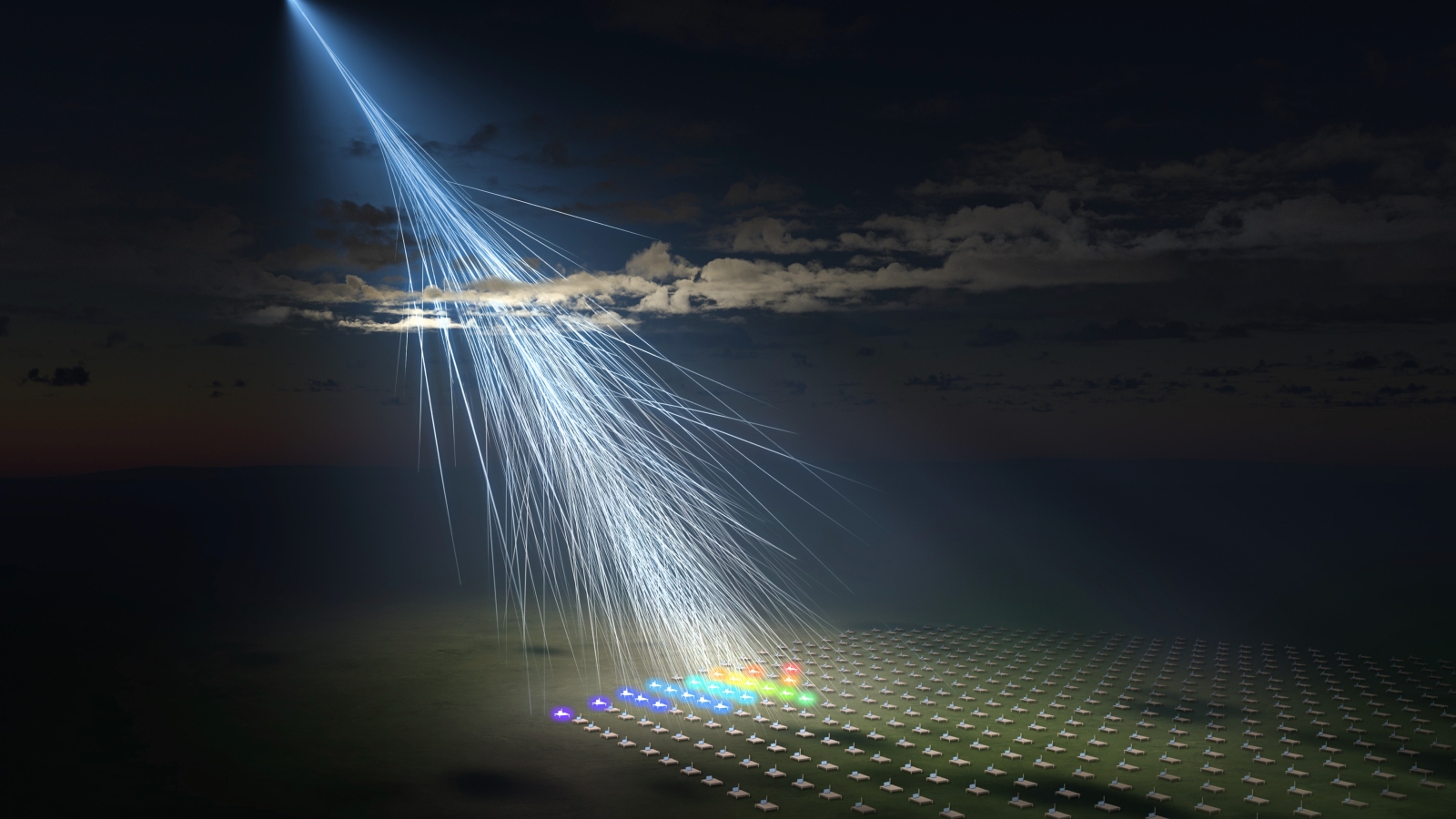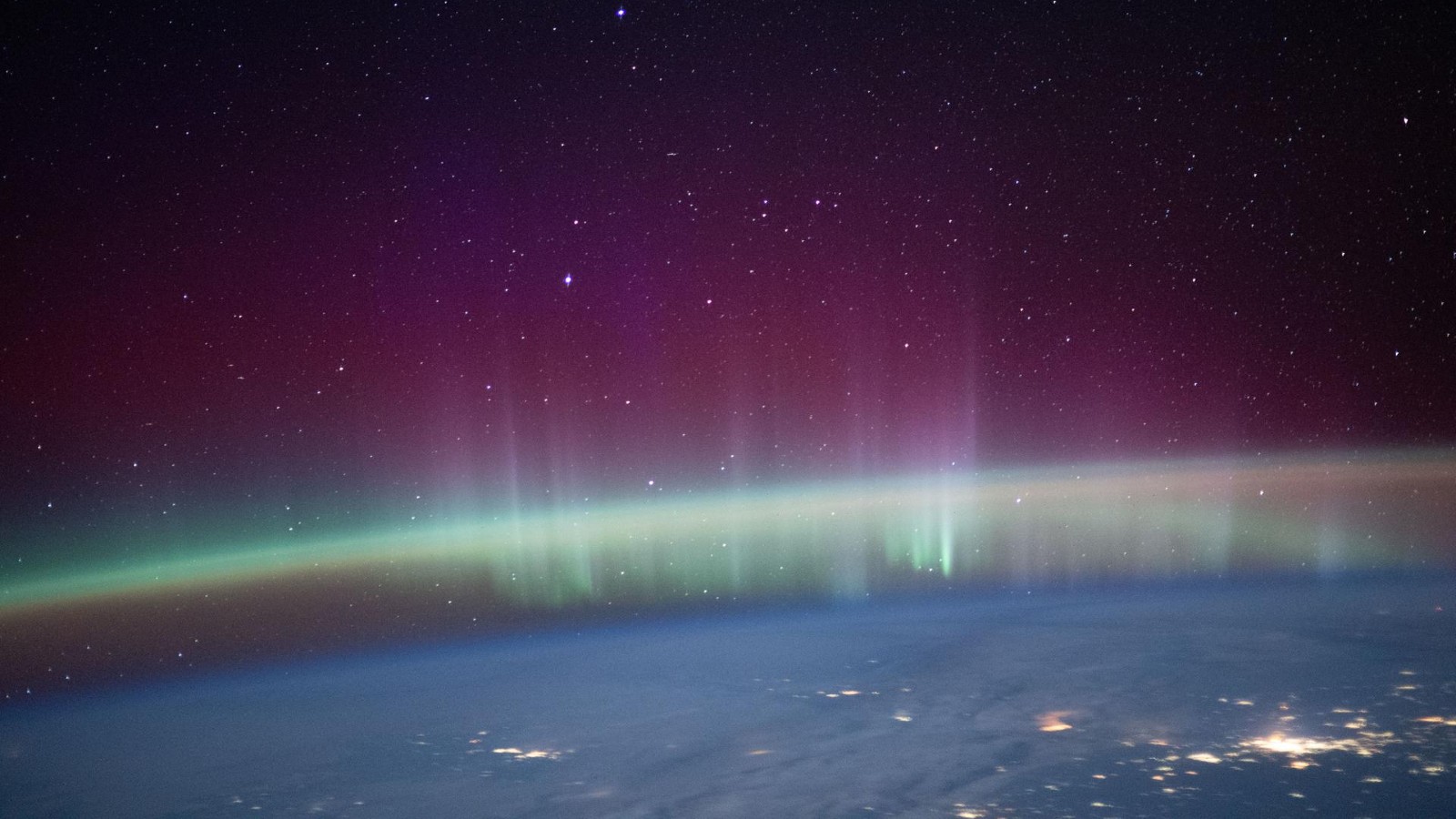Earth slammed by ultra-powerful 'goddess particle' cosmic ray, and we have no idea where it came from
Researchers recently detected an "ultra-high-energy" cosmic ray, which is the most powerful since the famous "Oh My God" particle was detected in 1991. They have no idea where it came from.

Researchers have detected one of the most powerful cosmic rays ever seen slamming into Earth — but they have no idea what caused it or where it came from. The extremely energetic particle, which has been named after a Japanese goddess, arrived from the direction of a void in the universe where almost nothing is known to exist, according to new research.
Cosmic rays are highly energetic particles, mainly consisting of protons or helium nuclei, that are constantly raining through every square inch of the universe (including our bodies). But a small subsection of cosmic rays, which hit Earth roughly once per square mile every year, are accelerated to even greater energy levels by some of the universe's most intense phenomena.
These extra-energetic particles, known as "ultra-high-energy cosmic rays," have at least one exa-electron volt (EeV), or 1 quintillion (1 followed by 18 zeros) electron volts, of energy, which is around a million times more energetic than the fastest particles from human-made particle accelerators.
On May 21, 2021, researchers detected one of these supercharged cosmic rays with the Telescope Array project — a detector made of individual substations covering more than 270 square miles (700 square kilometers) in Utah. This particular particle had a whopping 244 EeV of energy, which makes it the most energetic cosmic ray since the "Oh My God" (OMG) particle in 1991 — the most powerful cosmic ray ever detected, which had an energy of 320 EeV and traveled at more than 99.9% the speed of light.
Researchers from Osaka Metropolitan University (OMU) described the recent cosmic ray in a new study that will be published in the journal Science on Nov. 24. They named the mysterious particle "Amaterasu" after the sun goddess from the Shinto religion who is believed to have helped create Japan.
Related: Brightest gamma-ray burst ever detected defies explanation

"When I first discovered this ultra-high-energy (UHE) cosmic ray, I thought there must have been a mistake, as it showed an energy level unprecedented in the last 3 decades," study lead author Toshihiro Fujii, an astrophysicist at OMU, said in a statement.
Sign up for the Live Science daily newsletter now
Get the world’s most fascinating discoveries delivered straight to your inbox.
The scientists are unsure exactly where the UHE ray came from. "Its arrival direction points back to a void in the large-scale structure of the Universe," the researchers wrote in Science. This region has no known galaxies, nebulas or other cosmic structures.
It is possible that the cosmic ray originated somewhere else and was deflected toward us by magnetic fields surrounding a star or other massive object. However, UHE cosmic rays are less likely to be deflected than less-energetic counterparts, the researchers wrote.
It is also unclear what could have produced such a powerful cosmic ray. The researchers have suggested several possible sources, including supernova explosions, black hole mergers and pulsars.
But the particle could also come from an "unknown astronomical phenomena and novel physical origins beyond the Standard Model [of physics]," Fujii said.
Researchers are also still unsure what caused the OMG particle in 1991.
The team hopes that next-generation observatories will be able to trace the origins of these UHE particles and help reveal what causes them.

Harry is a U.K.-based senior staff writer at Live Science. He studied marine biology at the University of Exeter before training to become a journalist. He covers a wide range of topics including space exploration, planetary science, space weather, climate change, animal behavior and paleontology. His recent work on the solar maximum won "best space submission" at the 2024 Aerospace Media Awards and was shortlisted in the "top scoop" category at the NCTJ Awards for Excellence in 2023. He also writes Live Science's weekly Earth from space series.









